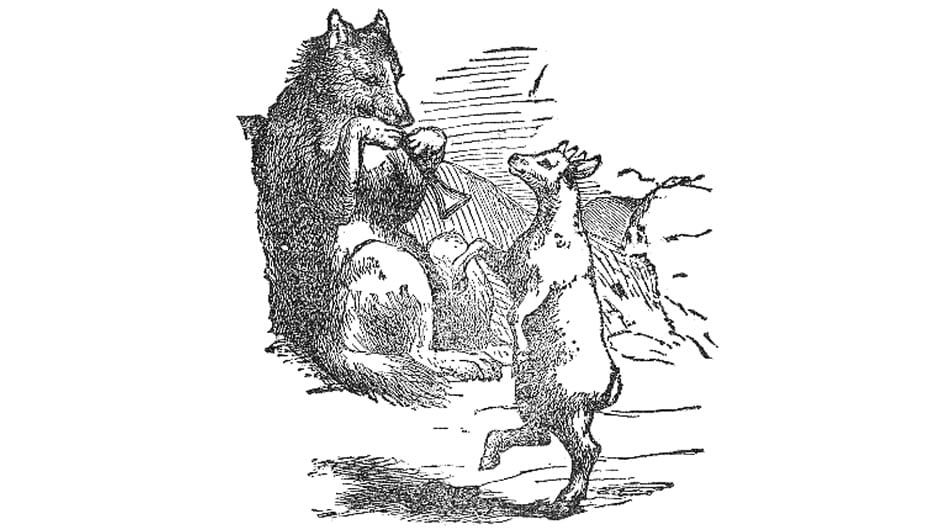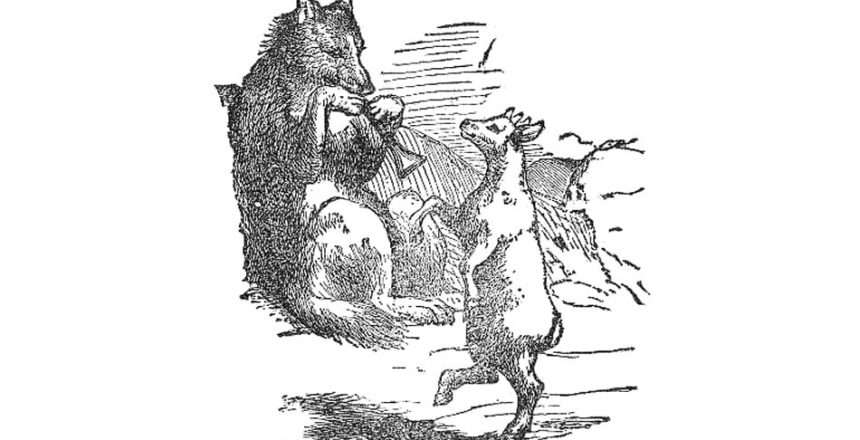Aesop was writing his fables in 300 BC. Now, 13 centuries later, ‘storytelling’ has become le mot du jour again.

Don’t tell lies or you’ll get eaten by a wolf
Aesop was writing his fables in 300 BC. Now, 13 centuries later, ‘storytelling’ has become le mot du jour again. Storytelling is the buzzword in marketing. Such is the desire for brands to stand out and engage with consumers in a way that elicits pounds in the till, storytelling, it appears, is where it’s at.
Note: the descriptor is storytelling – not telling stories. Because in the modern vernacular, Aesop might have said, telling stories will get you eaten by a wolf.
Content is dead….long live storytelling
It’s all very confusing. Just as we had got used to the it’s all about the content buzz, content is dead, now it’s ‘long live storytelling’. Or so says Jon Hamm in his article why Agencies and Brands Need to Embrace True Storytelling.
Branded content is not the same as storytelling. Hamm reminds us that brands link with consumers if they elicit emotion. Stories demand reader engagement and application of imagination. Brands have values, values evoke emotion. Use brand values to conjure up great stories and the consumer will engage powerfully. On the other hand, content, he argues, is created in the mind of the originator with “no heed to the mind of the audience.” Ergo it cannot have the same powerful impact.
Are you sitting comfortably?
Now I’m going to tell you a story.
Once upon a time there was a very greedy Grown-Up. Grown-Up wanted to graze and guzzle all day and night on mind-stuff, TV, books, Facebook, Twitter, Instagram. Because he could. And he felt he ought to because everyone else was. One day, Grown-Up’s head exploded. Literally.
“ I’ll give you some advice, Grown-Up”, said Doctor Wise picking up the pieces of Grown Up’s head and sticking it back together with special Doctor Glue. “Be more selective.”
“How?” said Grown-Up, grumpily.
“Be true to your feelings,” replied Doctor Wise. “If you want to be amused, be amused, watch a You Tube video of Miley Cyrus twerking and have a laugh. If you want to search for the perfect shoe, Google ‘perfect shoes’. If you can’t be bothered, go to your favourite shoe brand website. If you want to think about the world, subscribe to The Economist. If all else fails read a poem, talk to your Grown-Up other, or turn on the TV.”
“ I feel so much better now,” thought Grown-Up. “I’ll choose what I want to give my mind to from now on.”
Content is creative
Surely content is all about the mind-set of the audience, what they want to know and feel and how they want to experience it.
If people like it they’ll engage their minds in it. We know from the magazine market that consumers like and value content written by writers and journalists. This is not storytelling (not in my book) but researched and crafted writing with a creative aspect. The combination of imagery and words is intended to elicit an emotional engagement.
For this kind of content, fact and reality are very important in creating reader trust. It’s also about creating a feel-good factor. People who buy or read magazine content, whether it is in paper form or digital, enjoy it. Crafting a story from information is just another way of saying a lot of content – video, magazine features, brand messages – is not only factual. For magazine content, a journalist or writer gives information in an inspiring but not purely factual way, using images to give the reader a feel-good factor.
Don’t tell me a story
Consumers understand the genesis of content whether it be from independent media owners, brands direct, or is generated by an individual just having fun or expressing themself. Consumers are cynical, or savvy – if you prefer. This means brands do need to be careful that their content is credible and appealing. To be appreciated and engaged with it needs to offer customers something they really want and value. And while content does come in many forms that supports lifestyle choices and media preferences, it does not have to be a form of storytelling.
In fact, when it comes to some kinds of content – storytelling would be entirely wrong. That’s why journalists and editors are still alive and kicking and producing content that is researched and written to appeal to their audience. They understand how to get into the minds of that audience and produce trusted content that is highly enjoyed and appreciated.
And never just make-believe.



